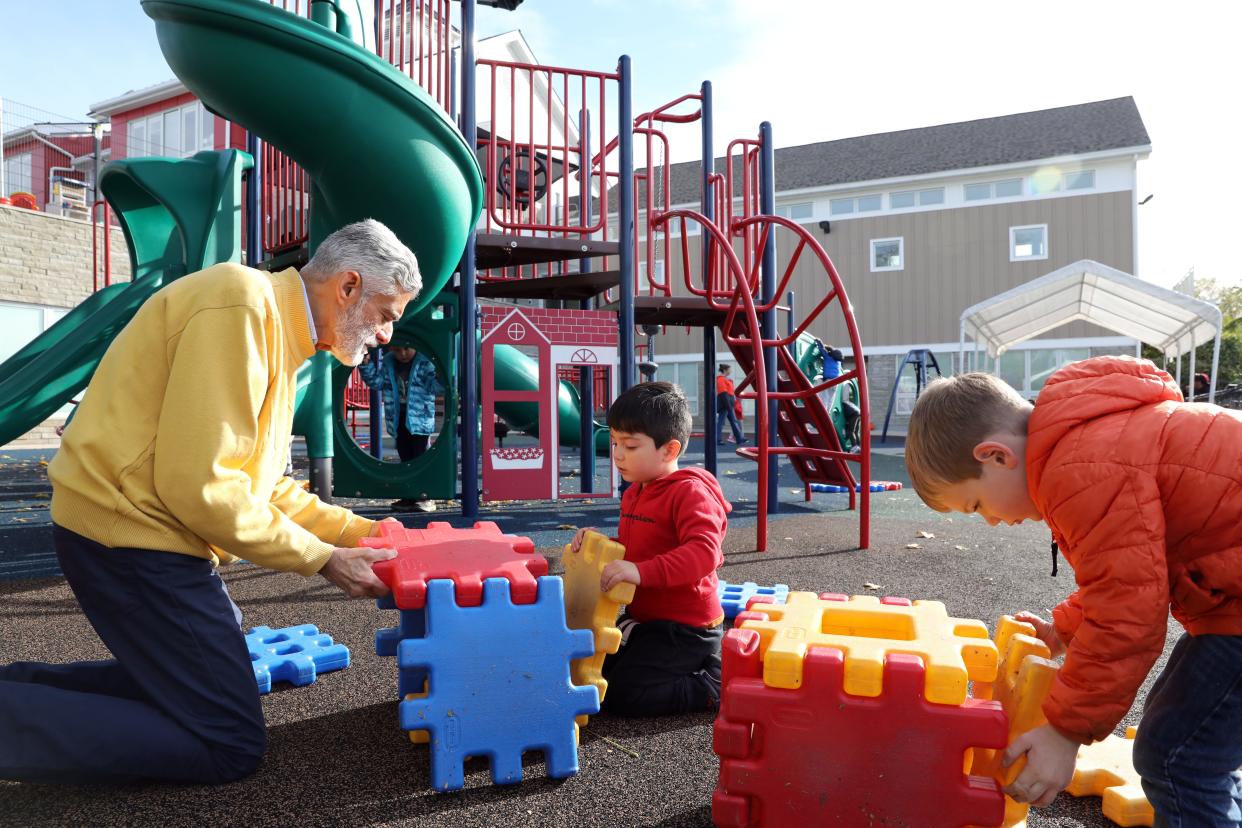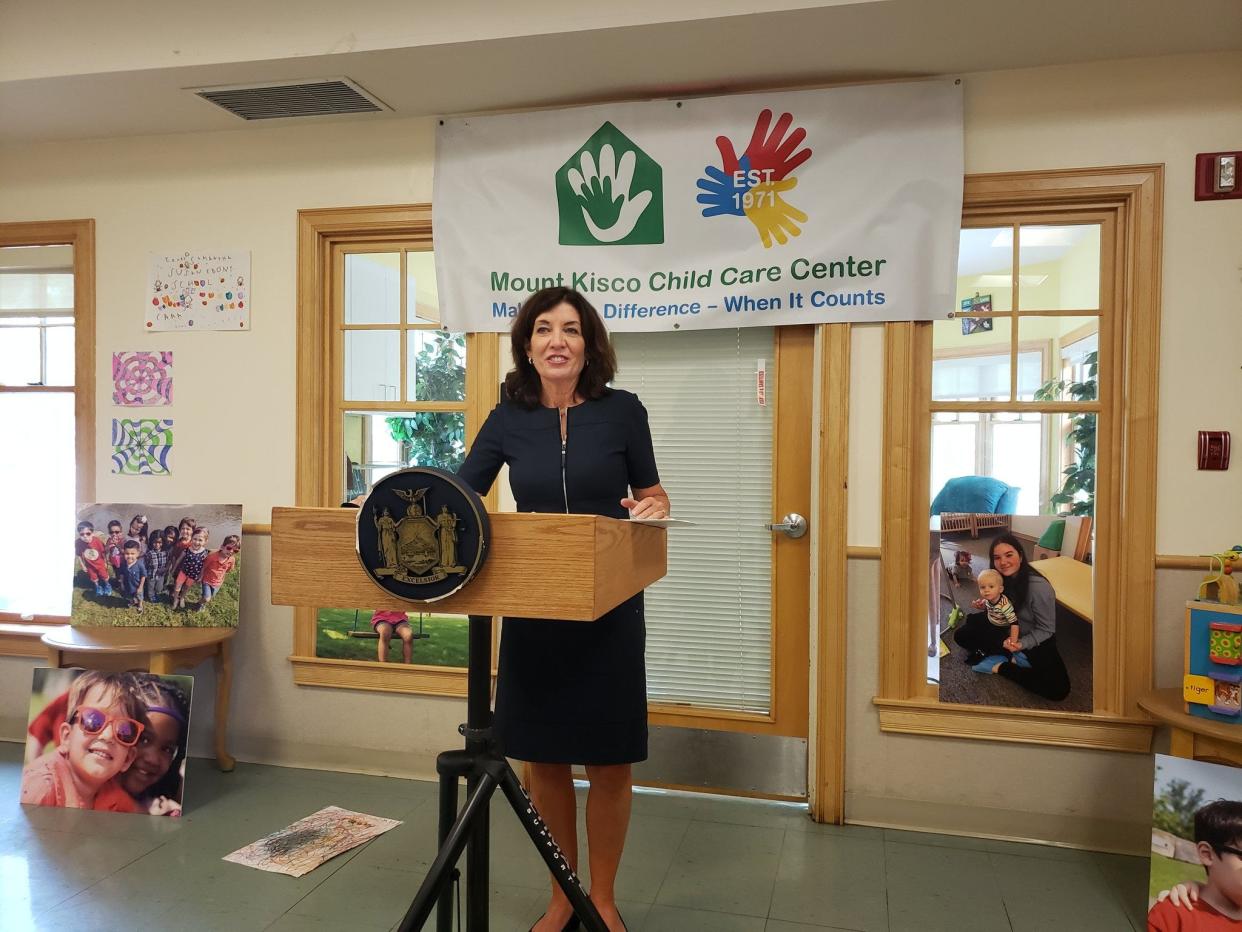Where can you find child care in the Hudson Valley? Parents are finding fewer answers.
The number of child care centers in the Hudson Valley is shrinking fast, outpacing the declining birthrate and leaving fewer options for families, according to a report released by Hudson Valley Pattern for Progress, a research and planning organization based in Newburgh.
The dire state of child care came to the fore in recent months as federal pandemic relief money dwindled. The report shows how bad things have gotten across the region.
"There's so few seats left in some of these places that when one place closes, the parents are on an island. They have nowhere else to go," Adam Bosch, president and CEO of Pattern for Progress, said during a recent presentation on the report.
The report examined data from nine counties: Columbia, Dutchess, Greene, Orange, Putnam, Rockland, Sullivan, Ulster and Westchester.
Between those nine counties, the report found, there are 1,685 child care providers licensed for 82,301 seats. With a total of 143,000 kids younger than 5 in the nine counties, there would only be enough seats for 58% if every seat was filled, the report concluded.
Columbia County saw a 63.9% loss in child care providers from 2007 to 2023, the largest in the region, followed by Sullivan County (61.9%), Green County (45.5%) and Ulster County (45.1%).
Bosch said that Hudson Valley employers need quality, affordable child care for their employees and that women in the workforce are disproportionately affected when unable to find child care.
Number of child care providers shrinking, but so is child population
The number of child care providers in the nine Hudson Valley counties decreased by 27% from 2007 to 2023. Statewide, the decline was 22%.
Birthrates have been declining fast, but the loss of child care has happened at a faster rate, the report found.
Here are other key takeaways:
Eight of the region's 13 cities saw a significant decline in the number of child care providers. Hudson and Newburgh saw the biggest losses, both down 61.5% in 2023 compared to 2007. Kingston was down 58.6%, Poughkeepsie down 51.9% and Middletown down 50%.
There were 28,000 fewer children in the Hudson Valley in 2022 than in 2010 because of the declining birth rate and migration patterns.
A declining population of children could mean that more child care providers will close.
On average, the yearly cost for child care for one child in the Hudson Valley is $12,000 to $15,000.
Westchester County was the only county among the nine that had the same number of child care providers as it did in 2007. Also in the Lower Hudson, Putnam lost 34.1% of its providers and Rockland lost 32.1%.
The report noted that Orthodox Jewish communities in Orange, Rockland and Sullivan counties have higher birthrates that break the regional trends.
In Rockland, the town of Ramapo, home to the county's large Orthodox population, saw a 41% increase in births from 2002 to 2015, while the other four towns in the county saw declines ranging from 10 to 32%.
Orthodox communities have "relatively few licensed childcare facilities because they rely on different social support structures to care for their kids," the report said.
Universal pre-K taking 4-year-olds from child care
The report outlined other factors that have impacted the child care industry in perhaps unintended ways.
The growing availability of universal pre-kindergarten "has unintentionally wounded the business model that private childcare businesses relied on," the report said.
Many 4-year-olds who would've been in child care have instead gone to publicly funded universal pre-K programs run by school districts, BOCES and other providers. But 4-year-olds were a major source of revenue for child care providers.
The report said that strict regulations for operating child care centers in New York and low wages paid to child care employees have also made it difficult for centers to stay open.
Many households qualify for subsidies but don't seek them.
Only a fraction of households that qualified for childcare subsidy claims received money through the New York State Child Care Assistance Program. Less than half of the money available through the program was used by Hudson Valley families in 2022. The report blamed poor marketing, inefficient application processes and language barriers.
Calls for change
Pattern for Progress reached conclusions and made recommendations:
Private child care in New York will likely disappear unless New York subsidizes it.
The state should examine how universal pre-K has impacted the child care system.
The state's child care subsidy program needs to reach more people who need it.
Child care regulations should be updated so it is easier to open and run a business as a child care provider.
New York needs more programs to support child care and early childhood education professionals.
Contact Diana Dombrowski at ddombrowski@gannett.com. Follow her on Twitter at @domdomdiana.
This article originally appeared on Rockland/Westchester Journal News: Hudson Valley NY child care providers are shrinking fast

